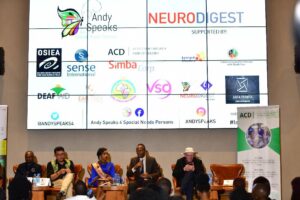No products in the cart.

If they cannot learn how we teach, let’s teach how they learn
The statement, “If they cannot learn how we teach, let’s teach how they learn,” resonates profoundly within the sphere of autism education. This guiding principle underscores the necessity of adapting educational methods to meet the unique needs of learners on the autism spectrum. Autism, a complex developmental condition, manifests in diverse ways, influencing how individuals perceive, interact, and respond to their environment. Recognizing this diversity is crucial in crafting effective teaching strategies that ensure every learner reaches their full potential.
Teaching Strategies for Autism
Understanding the autism spectrum is the first step toward developing inclusive teaching strategies. Autism affects individuals differently, meaning no single teaching method suits all. Instead, educators must identify and accommodate the distinct learning styles present in their classrooms. This approach not only fosters a supportive learning environment but also maximizes the educational outcomes for autistic learners.
Visual Learners
Characteristics of Visual Learners
Visual learners on the autism spectrum often excel when information is presented visually. They might have strong visual-spatial skills, enjoying activities like drawing, building, and visual puzzles. These learners typically benefit from seeing concepts in a concrete form, such as diagrams, charts, and images, which help them grasp and retain information more effectively.
Effective Teaching Methods for Visual Learners
To support visual learners, educators can incorporate a range of visual aids into their teaching. Using colorful charts, graphs, and pictures can make abstract concepts more tangible. Interactive whiteboards and visual storytelling also play significant roles in engaging these students. Additionally, tools like mind maps can help visual learners organize their thoughts and ideas coherently, enhancing their comprehension and retention.
Tactile Learners
Characteristics of Tactile Learners
Tactile learners, or kinesthetic learners, learn best through hands-on experiences. They often enjoy activities that involve physical manipulation of objects and materials. These learners might struggle with traditional lecture-based instruction but thrive in environments where they can engage in experiential learning, such as labs, workshops, and interactive simulations.
Effective Teaching Methods for Tactile Learners
For tactile learners, incorporating physical activities into lessons is key. This can include using manipulatives in math, conducting science experiments, and incorporating arts and crafts projects into various subjects. Allowing students to move around the classroom and engage in role-playing or dramatizations can also enhance their learning experience. These methods help tactile learners internalize information through direct interaction with their learning environment.
Audio Learners
Characteristics of Audio Learners
Audio learners on the autism spectrum benefit from auditory input. They often excel when information is presented through spoken words, sounds, and music. These learners might have a strong affinity for storytelling, listening to lectures, and engaging in discussions. Audio learners can often recall information better when it is reinforced through auditory means.
Effective Teaching Methods for Audio Learners
To cater to audio learners, educators can utilize a variety of auditory teaching aids. Reading aloud, using audiobooks, and incorporating music into lessons can significantly enhance their engagement. Additionally, verbal instructions and discussions are crucial for these learners. Teachers can also encourage students to create songs or rhymes to remember information, turning learning into an auditory experience.
Creating Inclusive Classrooms
Importance of Visual, Tactile, and Audio Learning Materials
An inclusive classroom is one that provides a range of learning materials catering to visual, tactile, and audio learners. This diversity ensures that all students have the opportunity to access information in the way that suits them best. Incorporating such materials not only supports autistic learners but also benefits the entire classroom by promoting a variety of learning experiences.
Benefits of Adapted Teaching Strategies
Adapted teaching strategies that consider the unique needs of autistic learners result in numerous benefits. These include improved academic performance, increased engagement, and a more inclusive classroom environment. By embracing diverse teaching methods, educators can create a more equitable educational experience that empowers all students to succeed.
Technology in Autism Education
Role of Assistive Technologies
Technology plays a pivotal role in supporting autistic learners. Assistive technologies, such as speech-to-text software, visual scheduling apps, and communication devices, provide essential support for students with diverse learning needs. These tools help bridge the gap between traditional teaching methods and the unique ways in which autistic learners process information.
Innovative Tools for Visual, Tactile, and Audio Learners
Innovative educational tools tailored to visual, tactile, and audio learners are transforming autism education. For visual learners, tools like virtual reality (VR) can create immersive learning experiences. Tactile learners benefit from interactive apps that allow them to manipulate virtual objects. Audio learners can use tools like podcasts and audio books to supplement their learning. These technologies not only enhance engagement but also provide personalized learning experiences.
Training Educators for Autism Support
Essential Skills for Educators
Educators who support autistic learners must possess a range of essential skills. These include patience, empathy, and adaptability. Understanding the principles of autism and the diversity of learning styles is crucial. Educators should be skilled in creating structured and predictable environments, as well as using positive reinforcement to encourage desired behaviors.
Professional Development and Training Programs
Professional development and training programs are vital for equipping educators with the knowledge and skills needed to support autistic learners effectively. These programs provide insights into the latest research, teaching strategies, and technologies in autism education. Continuous professional development ensures that educators stay updated on best practices and can implement the most effective teaching methods.
Case Studies
Success Stories of Adaptive Learning in Action
Numerous case studies highlight the success of adaptive learning in autism education. For instance, schools that have integrated sensory-friendly classrooms and tailored teaching methods have reported significant improvements in student engagement and academic performance. These success stories demonstrate the tangible benefits of adapting teaching strategies to meet the needs of autistic learners.
Lessons Learned from Inclusive Classrooms
Inclusive classrooms offer valuable lessons on the importance of diversity and adaptability in education. Educators who embrace inclusive teaching methods often find that their students are more motivated, engaged, and successful. These classrooms serve as models for how to create supportive learning environments that accommodate the diverse needs of all students.
Challenges in Implementing Adaptive Learning
Overcoming Barriers in Education Systems
Implementing adaptive learning strategies in education systems can present challenges. These may include resistance to change, lack of resources, and insufficient training for educators. However, by addressing these barriers through policy changes, increased funding, and comprehensive training programs, schools can create more inclusive learning environments.
Strategies for Continuous Improvement
Continuous improvement in adaptive learning requires ongoing evaluation and adaptation of teaching methods. Schools should regularly assess the effectiveness of their strategies and seek feedback from students, parents, and educators. By remaining flexible and open to change, educational institutions can ensure that their teaching methods continue to meet the needs of all learners.
Parental and Community Involvement
Role of Parents in Supporting Autism Education
Parents play a crucial role in supporting autism education. By collaborating with educators and reinforcing learning at home, parents can help their children thrive academically and socially. Providing resources and support for parents, such as workshops and support groups, can empower them to be effective advocates for their children’s education.
Community Resources and Support Networks
Community resources and support networks are essential for creating a holistic support system for autistic learners. Organizations that offer educational programs, therapy services, and social activities can complement school efforts and provide additional support for students and their families. Building strong community partnerships enhances the overall effectiveness of autism education.



